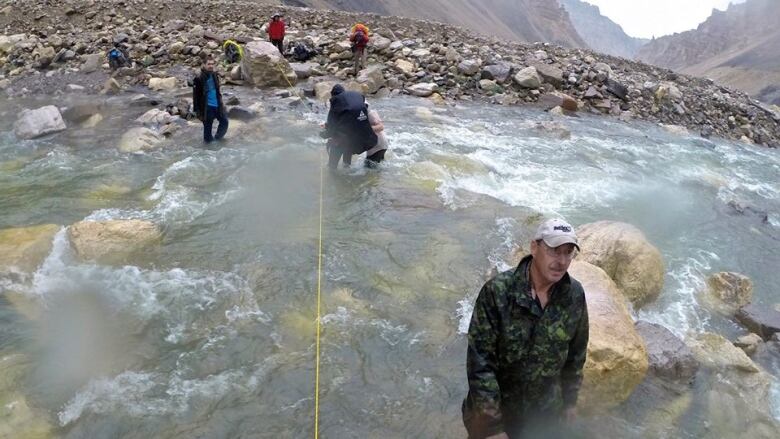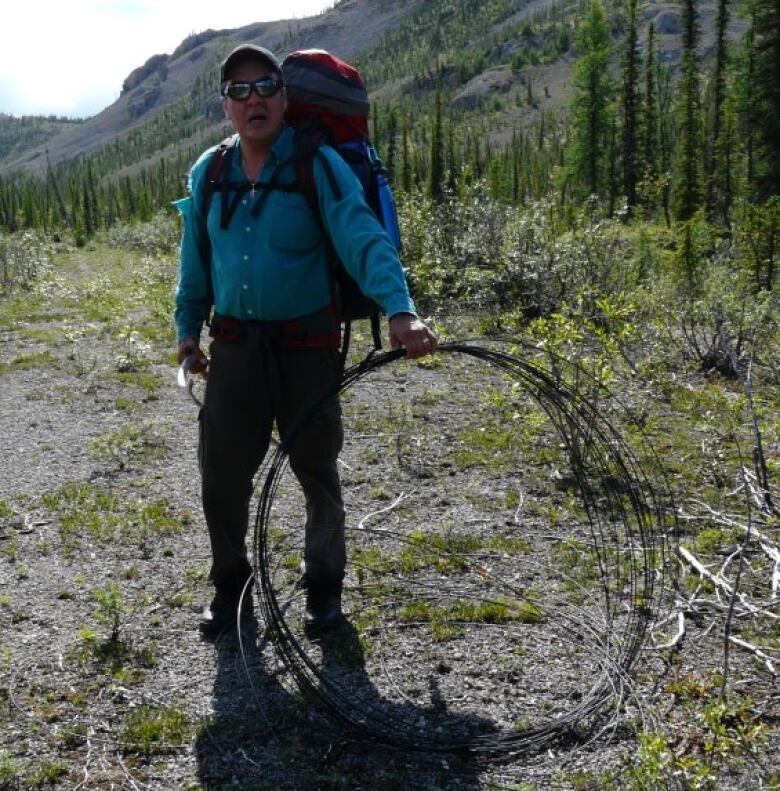Canol Trail wire cleanup project to move ahead
'I have tripped on that damn wire a million times over the last 10 years!' says hiker Myles Erb

The federal government is making plans to clean up gnarled, abandoned wire along the Canol Trail that has been snagging caribou and moose for years.
About 1,600 kilometres of telephone wire followed a pipeline built during the Second World War that snakes through the Sahtu region of the N.W.T. to Whitehorse. The federal government has received a land use permit to built a portable campfor workers who will clean up the wire along the N.W.T. portion of the route.

"It looks like someone took a shoe string and just mangled it around the antlers and all around the head," says Yakeleya.
The rugged hiking trail was originally a pipeline service road called the Canol Road a joint effort by the U.S. and Canada to bring oil from the newly discovered Norman Wells oil field to a refinery in Whitehorse, in case of a possible attack from Japan on Alaska. Completed in 1943, it was abandoned just one year later.
Since then, several salvage projects were conducted, but much of the legacy of the project remains strewn along the N.W.T. leg of the trail, including derelict buildings, rotting bridges, rusty drums, pipes, vehicles and contaminated soil.
"It makes you heart really sore because you sit there and you imagine how hard it was for the animals to die like that," Yakeleya says.
'A darngood start'
The federal government includes the pipeline on its list of contaminated sites. In 2009, it paid for some wire to be cleaned up along the first 80 kilometres of trail.

They'll be stored in a "secure" location and dealt with during future remediation projects. The portable camp will movealong the trail as the work progresses.
"I think it's a darn good start," says Myles Erb, who has hiked a portion of the trail each summer for the last decade. He now leads young people along the route and hopes the cleanup will make the trail safer for animals and hikers.
"I have tripped on that damn wire a million times over the last 10 years!"
The federal government is also in the process developing a separate remediation plan for the Canol Trail to deal with the rest of the debris left behind. It's now in the assessment phase.
No one from Aboriginal Affairs was available to comment on the project.












_(720p).jpg)


 OFFICIAL HD MUSIC VIDEO.jpg)
.jpg)



























































































